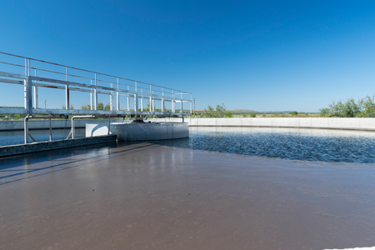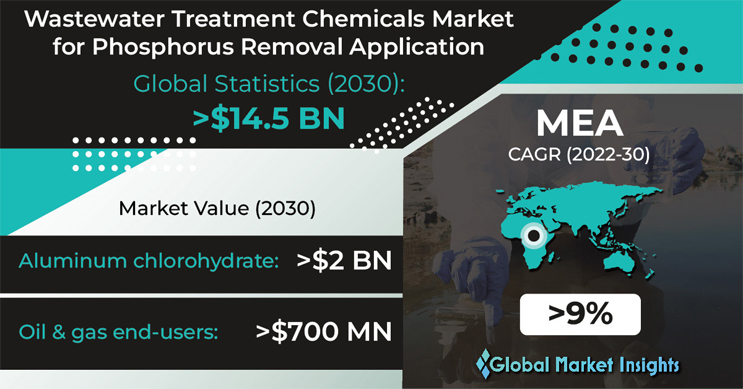Keeping Tabs On Water Consumption And The Wastewater Treatment Chemicals Market
By Pooja Sharma

Population growth and increasing prosperity, along with environmental stressors and regulatory mandates, amplify the need for wastewater treatment and chemicals.
The world has witnessed a steady rise in the volume of wastewater in recent years, given explosive population growth, healthy economic growth, ascending income levels, and consistent improvements in the water supply. It is no surprise that economic progress and GDP growth have led to an increase in water consumption, which itself is tied to changing food consumption patterns that put pressure on the agricultural and meat industries.
According to People for the Ethical Treatment of Animals (PETA):
- An average meat-eater consumes an estimated 15,000 liters of water per day, with a single steak equivalent to 50 bathtubs of water.
- Animals raised for food produce more than 10 times the waste generated by the entire human population, most of which runs off into waterways.
- Eliminating meat lowers water use by almost 60%.
Daunting estimates associated with the evolving dietary landscape point toward an anticipated surge in water consumption levels and call for a paradigm shift focused on adopting a proactive approach and introducing efficient wastewater management solutions, especially in developing economies.
Therefore, governments in several countries are implementing measures to gain more benefits from wastewater than just abating pollution, which will drive growth of the wastewater treatment chemicals market1 over the next few years.
How can sewage treatment boost the global wastewater treatment chemicals market?
- 51% of Irish sewage is treated in accordance with EU environmental standards — a far cry from the average of 90% in the EU.
- A project to eliminate raw sewage flowing into seas and rivers from 32 towns and villages began or is scheduled to begin by 2024.
- Irish Water has committed to improving treatment at 27 priority areas but has no clear plan for improving river, lake, and coastal water quality.
(From Urban Waste Water Treatment in 2021, EPA (Ireland), 2022)2
Despite the widespread concern about sewage in urban areas, these estimates also illustrate wastewater’s potential as a resource, as sewage is composed of merely 1% solid waste and more than 99% freshwater, which after treatment can again be used across numerous industry verticals.
Thus, local and national authorities worldwide are focusing on using efficient waste-management technologies to enhance their sewage treatment capabilities in response to the multifold growth of sewage in cities and urban areas and the escalating water crisis.
To cite an instance, in February 2022, the Delhi Jal Board submitted a report to the Union Jal Shakti Ministry stating its willingness to boost its sewage treatment capacity by 130 MGD by December 2022. The city struggles with high levels of pollution in the Yamuna River caused by untreated wastewater from slum clusters and unauthorized residential societies, as well as poorly treated wastewater discharge from wastewater treatment facilities.
The move aimed to enable the city to treat 95% of its 707 MGD of wastewater, thereby propelling the demand for wastewater treatment chemicals such as aluminum sulfate, aluminum chlorohydrate, poly aluminum chloride, sodium aluminate, ferric sulfate, ferric chloride, ferrous chloride, ferrous sulfate, etc.

Stringent regulatory mandates to mitigate accelerating climate change will present new growth opportunities for the wastewater treatment chemicals’ market size.
Climate change has severely disrupted weather patterns and resulted in unpredictable water availability, extreme weather events, contaminated water supplies, and exacerbated water scarcity. Such impacts can drastically affect the quantity and quality of water that an individual needs to survive.
To minimize these impacts and lay the foundation of a sustainable economy, regulatory authorities worldwide have introduced several reforms and stringent mandates. For instance, the Clean Water Act implemented by the U.S. EPA in 1972 has a set of strict effluent limitation guidelines (ELGs) that determine the maximum levels of contaminants that can be present in discharge water or industrial wastewater.
Industries that do not meet these standards are by law required to leverage more efficient water treatment technologies to lower the level of contamination to within the acceptable limits before discharge. Such initiatives and norms are poised to bring positive changes in the waste management scenario and therefore will strengthen the wastewater treatment chemicals market outlook through the ensuing years.
Worsening water stress is paving the way for future growth.
Clean water is one of the essential life-supporting elements, yet billions of people across the globe lack access to it. Despite the consistent efforts and initiatives undertaken by aid groups and governments to help people living in water-stressed regions, the problems are projected to get worse in the coming years.
This apart, conflicts over environmental crimes and natural resources have further intensified the issue. UN estimates suggest that a significant share of internal conflicts that took place over recent decades are associated with natural resources. Since the exploitation of natural resources leads to loss of livelihood, environmental damage, unequal distribution of benefits, and elevates the risk of violent conflict, the need to manage them sustainably and transparently is of utmost importance.
These concerns have accentuated the efforts undertaken by global policymakers to bring forth agendas focused on sustainable development, which, in consequence, may drive lucrative gains to the wastewater treatment chemicals industry.
References
- https://www.gminsights.com/industry-analysis/wastewater-treatmentchemicals-market-for-phosphorus-removal-application
- https://www.epa.ie/publications/monitoring--assessment/waste-water/urbanwaste-water-treatment-in-2021.php
About The Author
 Pursuing her professional career as a content writer for over two years now, Pooja Sharma has a post-graduate degree in English literature. The articles she writes are a balanced blend of her ever-growing love of language and the technical expertise that she has gained over the years.
Pursuing her professional career as a content writer for over two years now, Pooja Sharma has a post-graduate degree in English literature. The articles she writes are a balanced blend of her ever-growing love of language and the technical expertise that she has gained over the years.
